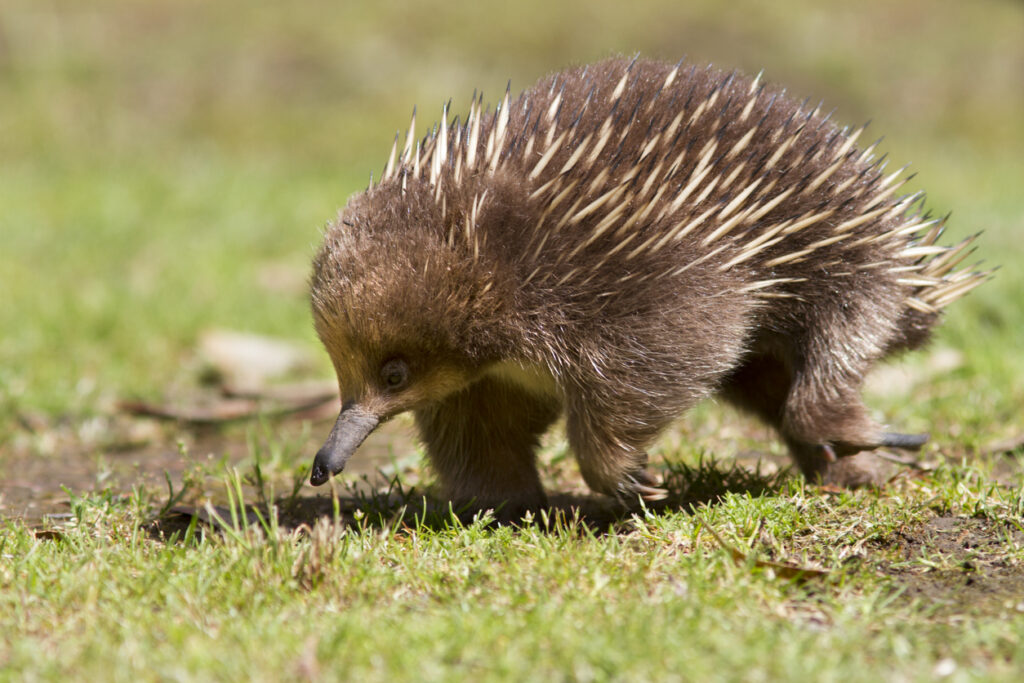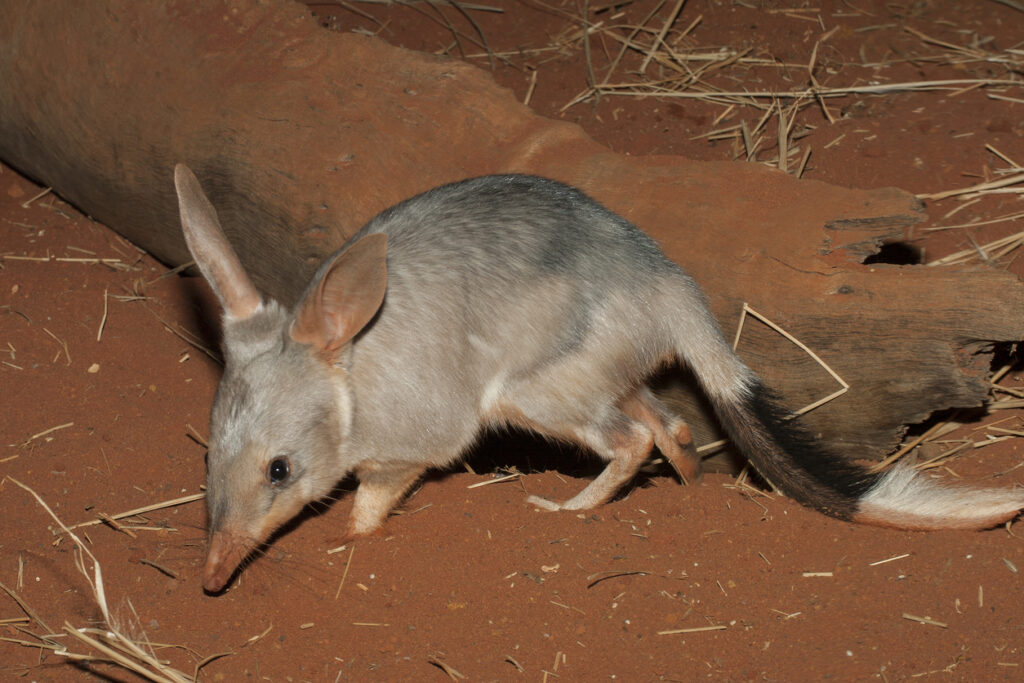1. Echidna

Australia’s echidna might look like a spiky recluse, but it’s actually an ecological powerhouse. As it digs for ants and termites, it creates hundreds of soil pits across forest floors. These tiny holes trap seeds, moisture, and organic debris, encouraging new plant growth and locking carbon in the soil. Research shows echidnas can move up to eight trailer-loads of soil each year, turning their landscapes into carbon sinks without even knowing it.
Experts say echidnas boost soil fertility by increasing microbial activity and aeration, two key ingredients for natural carbon storage. Because the carbon gets buried in cool, undisturbed layers, it stays locked away for years. Their role in bioturbation (soil mixing by animals) has earned them recognition as unexpected climate warriors. Protecting echidnas isn’t just about wildlife, it’s about defending a living carbon network. Their quiet work is proof that climate solutions sometimes come from the ground up.
2. African Forest Elephant
Forest elephants aren’t just the gentle giants of Central Africa, they’re nature’s forest managers. These elephants trample and eat fast-growing plants, giving slow-growing, carbon-dense trees more space to thrive. By dispersing seeds of these heavyweight trees across vast territories, elephants help forests capture and store more carbon. Research shows that a single elephant can influence carbon absorption over an area as large as 250 acres, just by doing what comes naturally.
Scientists have found that tropical forests with active elephant populations store significantly more carbon above and below ground. Their absence leads to overcrowded underbrush and less efficient carbon storage. That’s why many experts now see forest elephant conservation as part of a global climate strategy. Rewilding efforts and anti-poaching initiatives don’t just save elephants, they help protect one of the most vital ecosystems for carbon sequestration on Earth. Saving these megafauna may be one of our smartest climate investments.
3. Sea Otter
Sea otters may be adorable, but their real magic lies underwater. These furry marine mammals feast on sea urchins, which, left unchecked, can devour entire kelp forests. Kelp is one of nature’s best carbon vacuums, pulling carbon dioxide from the atmosphere as it grows. In regions where sea otters thrive, kelp forests can store up to 12 times more carbon than unprotected coastlines. It’s a predator-prey relationship with a major climate twist.
Healthy kelp ecosystems don’t just absorb carbon, they stabilize coastlines, boost biodiversity, and even support fisheries. Marine scientists emphasize that letting otters bounce back could be a powerful, low-cost solution to rising carbon levels. Reintroducing them to historic habitats has already shown success in Alaska and California. It’s proof that protecting one species can ripple out to benefit an entire underwater world. The next time you see a sea otter floating on its back, know it’s also helping the planet float.
4. Gray Wolf
Gray wolves don’t plant trees, but they help forests grow by simply being themselves. In ecosystems like Yellowstone and Canada’s boreal zones, wolves keep herbivores like deer and moose in check. That prevents overgrazing, allowing saplings and shrubs to thrive. More plant life means more carbon absorbed from the air and stored in soil and vegetation. It’s called a “trophic cascade,” and it turns predators into climate players in unexpected ways.
Researchers found that reintroducing wolves led to denser vegetation and healthier rivers, because less browsing meant more ground cover. Over time, these changes lead to greater carbon capture across entire landscapes. In North America alone, protected wolf habitats are thought to store millions of tons of carbon every year. For scientists, this proves that apex predators are essential not just for biodiversity, but for climate stability. Restoring wolves might just help restore balance in more ways than one.
5. Whales
Whales are some of Earth’s biggest living carbon sinks, literally. Over their long lifespans, they accumulate tons of carbon in their massive bodies. When they die, their carcasses sink to the ocean floor, locking that carbon away for centuries. But that’s not all. Whales also feed at depth and surface to breathe and defecate, fertilizing the upper ocean layers with nutrients that help phytoplankton thrive.
Phytoplankton are tiny but mighty they absorb nearly 40% of all carbon emissions and produce much of the planet’s oxygen. With whales acting as their gardeners, phytoplankton blooms can increase significantly. Experts call this the “whale pump” and estimate that fully recovering whale populations could remove hundreds of millions of tons of CO₂ every year. Protecting these gentle giants isn’t just about saving a species, it’s about saving our atmosphere. Whales may roam the seas, but their influence reaches deep into the climate system.
6. Bison

Bison have long been symbols of strength and freedom, but they’re also environmental workhorses. As they roam grasslands, they graze, trample, and fertilize the land in ways that promote diverse plant growth. This keeps grasslands healthy, which is key for trapping carbon in deep-rooted prairie soils. Scientists studying reintroduced herds in Romania found that their grazing helped remove carbon dioxide equal to the annual emissions of 43,000 cars.
Their hooves aerate the soil, while their droppings nourish it. These natural cycles create rich conditions for native grasses and plants, which store carbon more effectively than farmed crops. Bison also help prevent overgrowth and wildfire risks by maintaining open landscapes. Rewilding efforts across Europe and North America are not just about restoring a species but also reviving ancient ecosystems that work as carbon sinks. Supporting bison populations brings together conservation, climate action, and cultural heritage in one incredible package.
7. Ragworms and Mud-Dwelling Invertebrates
Ragworms, clams, and other tiny burrowers living in coastal mudflats are surprisingly powerful carbon allies. These creatures dig through the sediment while feeding, pulling organic material like algae and plant matter deeper into the mud. This natural process buries carbon in low-oxygen environments where it can stay locked away for centuries. While they work unseen, their contribution to carbon sequestration is massive and often overlooked by mainstream climate models.
Marine researchers estimate that these tiny invertebrates help bury more carbon each year than many forests on land. Their movements keep sediments healthy, promote microbial activity, and stabilize coastal ecosystems. Without them, erosion and decomposition would release more carbon back into the water and atmosphere. Preserving tidal flats, estuaries, and mangroves where these animals thrive is crucial. Sometimes, saving the planet means saving the small things too. These wiggly creatures are nature’s original carbon diggers, working tirelessly beneath our feet and below the tides.
8. Sharks and Large Marine Fish
Sharks and other big fish often make headlines for the wrong reasons, but ecologists see them as crucial to ocean health. By controlling prey populations like sea turtles and dugongs, sharks keep seagrass meadows and coral reefs balanced. These ecosystems are powerful carbon sinks, capturing and storing carbon through photosynthesis and long-lived root systems. When sharks disappear, these systems often collapse, leading to increased carbon release and biodiversity loss.
Marine biologists say sharks maintain order in the food web. Their presence ensures that grazing species don’t overfeed and destroy delicate plant life. With healthier marine plants come stronger sediment structures that bury carbon more deeply. Rebuilding shark populations helps bring back this ecological balance. It also supports fisheries and coastal communities that depend on stable ecosystems. Protecting apex predators in the ocean is not just about saving iconic species. It is a nature-based solution with ripple effects across the climate system.
9. Wildebeest
Wildebeest may seem like just part of Africa’s stunning scenery, but their migrations play a surprising climate role. These massive herds graze on dry grasses, recycle nutrients with their dung, and move constantly across the savannas. This prevents dry vegetation buildup, lowering wildfire risk. Since wildfires release tons of carbon into the atmosphere, fewer fires mean less climate damage. Their presence helps turn grasslands into safer and more stable carbon storage zones.
Research from Serengeti Park suggests that when wildebeest populations dropped due to disease, wildfires surged and carbon emissions rose. As their numbers recovered, fire frequency fell, and the savanna returned to a more balanced state. Wildebeest are proof that ecosystem balance depends on keystone species. Their role in grazing, fertilizing, and cycling nutrients makes them essential to climate-smart land management. Protecting wildebeest and their migratory paths supports carbon savings and biodiversity. These animals roam with purpose, even if they don’t know it.
10. Tapirs
Tapirs might look like jungle oddballs, but they play a vital role in reforestation. These shy, snouted creatures eat a wide range of fruits and then walk miles through tropical forests before dropping seeds in their dung. This spreads seeds far beyond where most animals travel, helping large, slow-growing trees establish deep in the forest. These trees are carbon giants, storing more carbon than smaller, faster-growing ones common in cleared or degraded forests.
Because tapirs travel far and defecate in nutrient-rich piles, they give seeds a better shot at survival. This builds stronger forest canopies and helps rainforests regenerate naturally. In areas where tapir populations have disappeared, scientists are seeing fewer big trees and less biodiversity. Protecting tapirs is more than a conservation effort. It is an investment in the long-term carbon-holding power of tropical forests. The quiet wanderings of tapirs plant the seeds of a cooler, more stable future.
11. Digging Mammals: Bilbies, Aardvarks, and Jackrabbits

Bilbies in Australia, aardvarks in Africa, and jackrabbits in North America all share a strange superpower. As they dig for food and shelter, they turn over vast amounts of soil, burying leaf litter and organic matter in the process. This natural tilling stores carbon underground while promoting water retention and seed growth. In degraded ecosystems, reintroducing these diggers has helped kickstart plant recovery and restore the land’s ability to absorb carbon.
Researchers call them “ecosystem engineers” because of how they shape landscapes. Their digging allows rain to seep deeper into the soil and creates microhabitats where plants and microbes flourish. This boosts biodiversity and improves the soil’s ability to trap carbon over time. Sadly, many of these species are threatened by habitat loss and invasive predators. Saving them restores more than just an animal, it revives the very foundation of healthy, carbon-storing ecosystems. These little diggers deserve a lot more credit.
